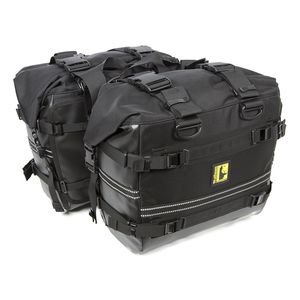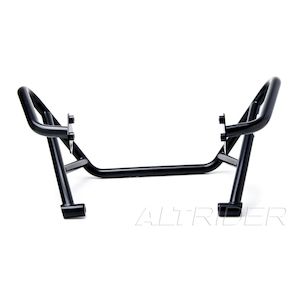"You Needed to Know" is our series in which we answer your questions about the long-term loaner motorcycles we have in the ZLA garage. This edition looks at Honda's Africa Twin DCT.
All questions for this edition of Needed to Know were sourced from our YouTube channel.
mmmeff: Front fork stiction — have you guys experienced it? It's a common issue with the non-Adventure Sports edition of the bikes... cheap anodized coating wearing prematurely and causing the suspension in the front to seize up. Forums out there peg it as a common problem with the Africa Twin, and I started getting it on mine after 6,000 miles, making for a very rough ride, and it's very concerning to read reports that Honda is declining warranty claims on the issue.
Lemmy touched on this in his recent write up but I wanted to dig in a little deeper.
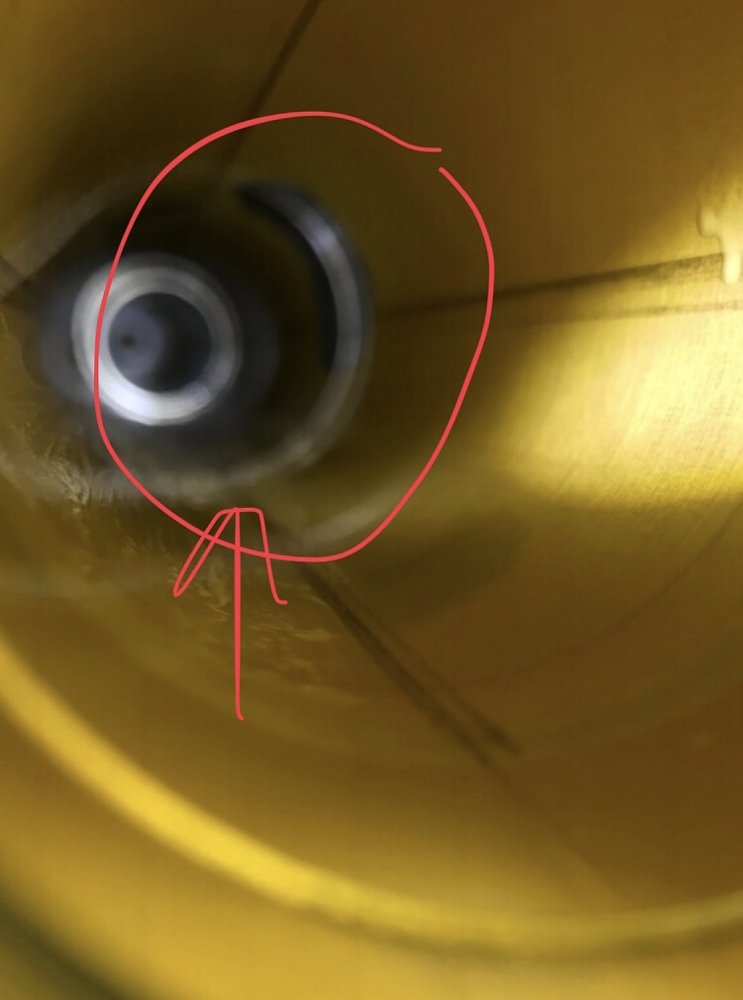
I first heard about this issue about a year ago from Alex Martens at Konflict Motorsports, a suspension shop that rebuilt my Tiger’s suspension for me. I spoke to him for this article and he said the main problem he has seen is that the upper tubes on the fork have too much flex built into them. The upper bushing on the lower stanchion rubs against the inner portion of the upper fork tube where the lower triple mount secures the fork. He noted that his current solution is to hard anodize (MIL-A-8625, TYPE III, CLASS 2) the upper tubes and replace the inner and outer bushings. Alex says the ultimate goal is to space the stanchion a bit further off the upper tube during compression through the lower triple clamp. He also noted that for aggressive off-road riders who weigh over 200 pounds, this fix won't do much. For those folks, he recommends replacing the upper fork tube.
Giving Honda a chance to respond, I spoke with Colin Miller, who said they have had some complaints of static stiction and wear on the internal anodizing of the fork tube, but the majority of the complaints come from folks compressing the forks when sitting still. He said there have been almost no claims from people noticing any problems during regular riding. He reminded me that the anodizing is primarily used to prevent corrosion and signs of wear on an anodized surface is not necessarily a reason to be concerned.
“I have seen some wear on the anodizing on some customers’ forks but I also inspected forks that function perfectly (a professional-level rider with no problem) and have seen the same wear,” Miller assured me. “Just for perspective, I can count on one hand the amount of warranty claims for wear on the fork tubes. We also investigated this with Japan and found no functional problem with some fork wear.”
To this, Alex said that it's not so much the scoring in the anodization that's the problem, but where those shavings end up. That being said, even Alex admits that whether or not folks will experience this problem depends heavily on the rider’s abilities, weight, and type of riding they are doing. As for us, we have yet to notice any problems with our 2017 model, but our bike has remained almost entirely on the street.
Alfonso Santiago: I do have a question on the DCT actually. It seems great for a goldwing, where your clutch is nothing else than a switch for changing gears. But in an adventure bike?! I mean I use a lot the clutch half way when I'm riding in the rocks at sub-idle speeds, or to have that extra kick increasing the rpms and releasing the clutch more aggressively. Do you think a DCT is good in a bike like this? Would you, Spurge, pay extra for the DCT in an adventure bike as an Africa Twin?
We had a lot of questions about whether the DCT is good off-road. What I can tell you is that opinions on this issue are split relatively evenly among most people I speak with.
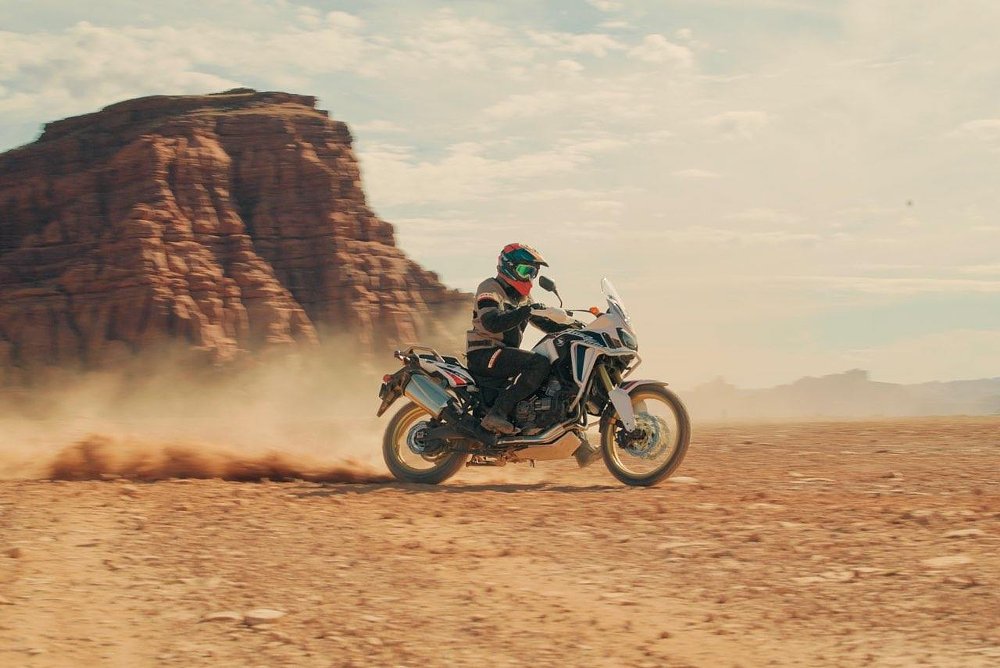
Mi gran amigo, Steve Kamrad, just returned from filming a Rev’It! video out in Moab where he spent quite a bit of time riding a DCT. He really enjoyed it off-road and said he preferred it to the manual. Colin Miller over at Honda said that he felt that the DCT offered him a huge advantage off-road when riding with more experienced off-road riders who were way out of his league.
I would point out that there is a learning curve to the DCT and you have to give yourself the time to get used to it. Personally, even after giving myself that time, I am still not convinced it is for me. I have a hard time riding it slowly in technical terrain. I’m sure it’s more of a mental thing in my head than a problem with the bike but I can’t get around not wanting to feather the clutch.
Even the comments we’ve seen from other riders are split. I am going to say it’s something you’ll have to try for yourself to see if you like it. It’s like a Rekluse clutch kit on a dual-sport. It’s polarizing.
loric loppi: Can you wheelie it without having to bounce it like a scooter?
How does it launch?
Can you change the rear sprocket?
How much delay is it there between a button and the actual shift?
How does it sound at full tilt, in the most aggressive mode it has, driving like you stole it?
In response to your first question, here is a picture of Lemmy riding a wheelie with this bike, no bouncing required.
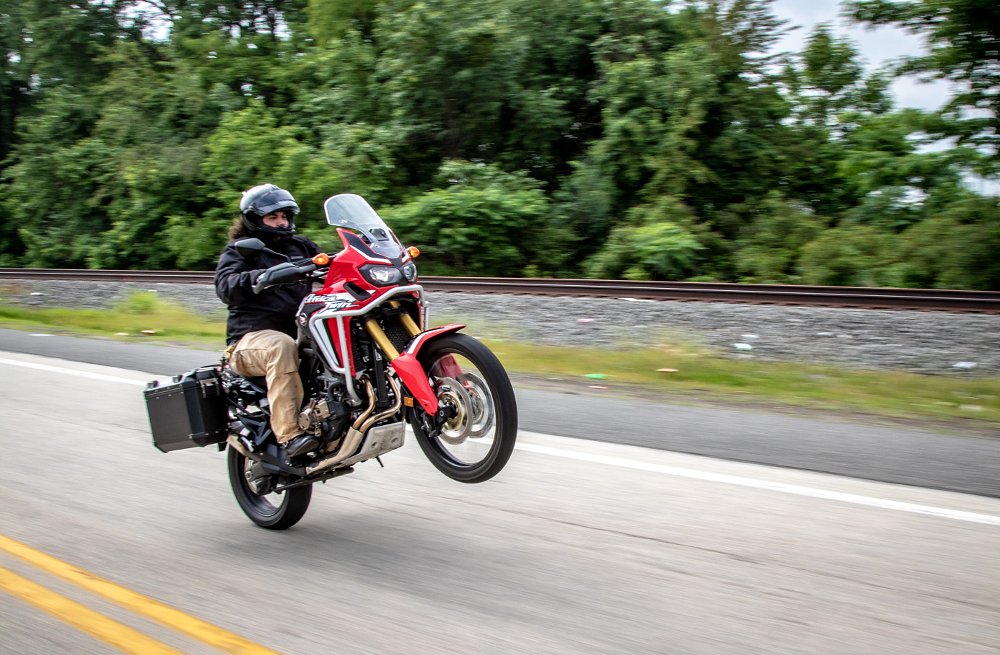
It’s a torquey engine, especially when compared to some of the other bikes in the class that build their power higher in the rev range. It’s a standard chain drive, so you can alter gearing either by changing the countershaft sprocket or the rear wheel sprocket. If you’re paddle shifting in “manual” mode, the shifts are relatively instantaneous with minor lag. It has a decent snort to it with the stock exhaust, but would probably sound a bit nastier with a new muffler on there.
Dennis A: What OEM options would you recommend (center stand, 12v socket, heated grips, etc)? And what crash bars and skid plate would you prefer?
It really depends what you want to tackle with the bike. I think a center stand is a good option regardless of what you’re planning on doing with the bike. A center stand makes regular chain maintenance easier and it’ll come in handy if you have to fix a flat tube on the side of the road.
I think if you’re planning on heading off-road with any adventure bike, the basic four protection upgrades you should add are crash bars, skid plate, a radiator guard, and lever protection. Personally, I like AltRider parts. I used their protection parts on my Tiger and they always kept the bike safe, even in my bigger spills. Barkbusters are a solid option for lever guards.
Luggage is another option to consider. Lemmy recently discussed how much he is currently enjoying the Givi Outback Trekker cases over the stock OEM luggage. I used the same Givi setup on my Tiger and I was just as impressed. If you are planning on more off-road-oriented riding, consider the Wolfman Rocky Mountain Saddlebags or the Kriega Overlander-S OS 32-Liter Drypacks, both of which require luggage racks installed in order to mount them to the bike.
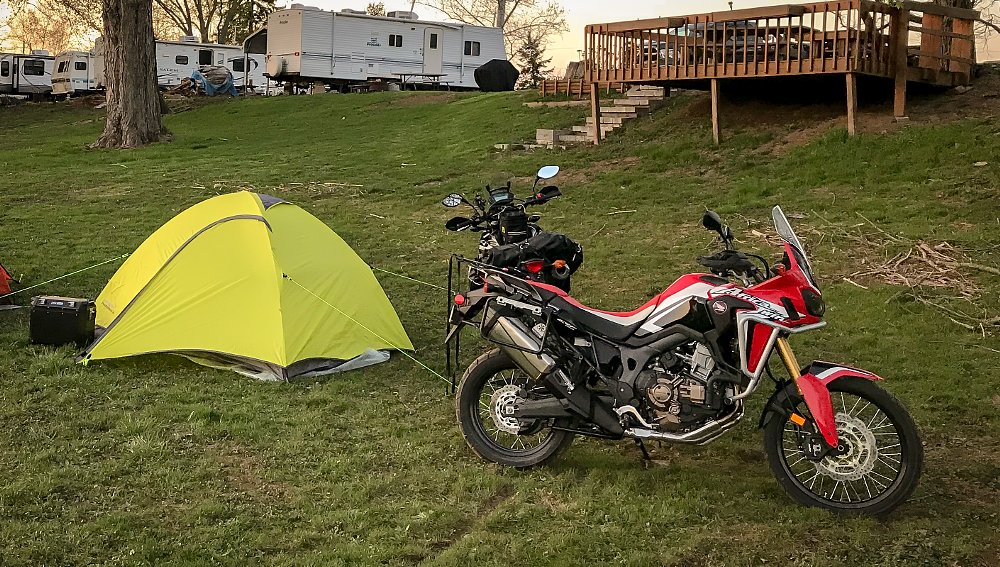
The Suburban Patriot: I am 5'8" with a 30" inseam. How does it work for shorter (ish) riders?
The Africa Twin features an adjustable stock seat which sits at 33.5 inches in the low position and 34.3 inches in the taller setting. That means it’s a bit taller than something like a stock Triumph Tiger XCx (33.1 to 33.9 inches) and a bit shorter than something like the KTM 1090 Adventure R (35 inches). If you are super concerned with the height, Honda makes an accessory lowered seat adjustable between 32.3 and 33.1 inches for a more manageable reach to the ground. At five feet, eight inches, you should be able to pilot one of these without any major alterations.
Sunset's Garage: Is there any extra wear, weight or maintenance cost that come with the DCT. Extra clutch wear? Does it take a special trans fluid? Is it any heavier than the standard? And lastly how is it to ride? Any smoother than the standard? Clunkier? More noisy?
This question from Sunset’s Garage encompassed a few of the ones I saw pop up regarding the DCT system and the associated cost of ownership. I spoke again with Miller at Honda and he broke down all of the additional maintenance costs.
The Africa Twin DCT does have an additional clutch oil filter that gets changed every other oil change. That filter ($9.96) is standard for all Honda DCT systems. There is no special transmission oil or separate filler cap. The system utilizes the same engine oil. The capacity is slightly higher by 0.1 liter. The clutch features two packs, which are complete assemblies that are considered lifetime parts and do not require special maintenance or adjustment. The DCT system does add 23 pounds to the bike.
I could imagine that if something were to go wrong it may possibly cost more to repair than a traditional manual, but all things considered, it looks like there shouldn’t be any immediate drastic increase for the cost of ownership.
The DCT system is no noisier than its manual counterpart. It shifts nice and smooth, although, as Lemmy discussed in his recent article, the fully auto setting doesn’t let the engine spin as high in the rev range as he would like prior to shifting. You can override this by choosing the “manual” mode where you shift it using the paddles on the left grip assembly.
Film Herald: How does it compare to its rivals from KTM, BMW, Yamaha & Triumph?
I think the biggest thing that sets it apart from its peers is the available DCT option for riders who are interested in it. Objectively, it’s also one of the best looking bikes of the bunch.
I think it is extremely well balanced between two worlds of the street and the dirt. The engine is fun and punchy, I like it better than the parallel twin found in the BMW F 800 GS and it doesn’t need to be wound out as much as the Triumph Tiger 800s to deliver its power. The 1090 Adventure R from KTM features a more powerful engine with a better stock suspension, but the 1090 also has an MSRP that is about $1,500 more than the manual Africa Twin and $800 over the DCT version.
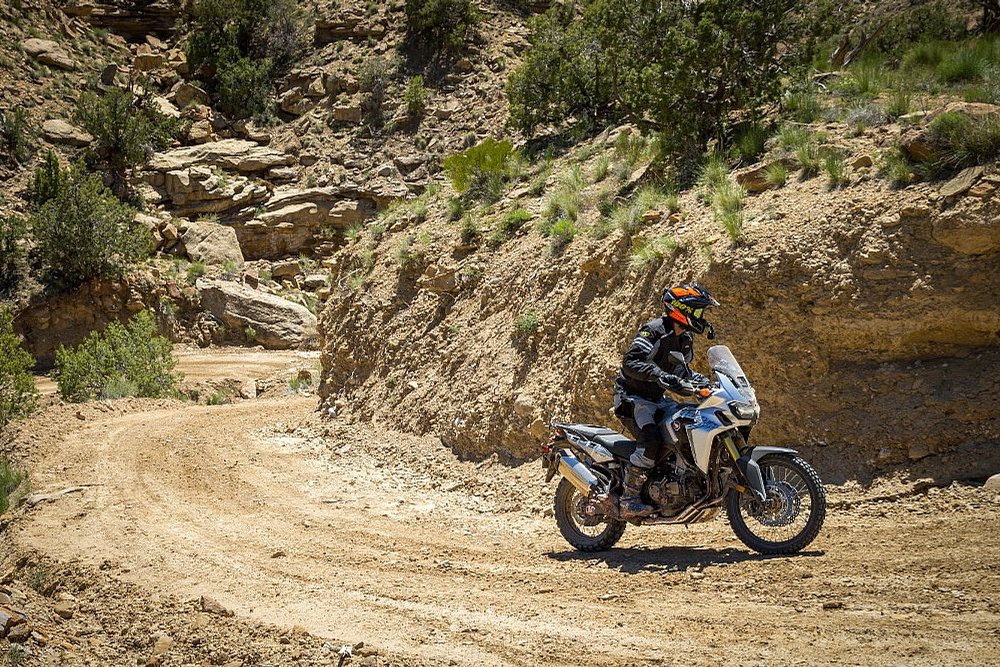
It really comes down to how you plan to use the bike. I think the Tiger 800 wins for adventure-touring riders who are more concerned with amenities like electronic cruise control when traveling between patches of dirt. I think KTM has really set the bar for this segment for folks looking to have fun on the street and the dirt, but it’s a tall bike that is intimidating for a lot of people. The F 800 GS is a bit out of date at this point with its undersprung fork and underpowered engine and we’ve yet to see the new 850 GS show up (what gives, BMW?). As for Yamaha, I’d be more excited to compare the Africa Twin to a new T7 than the Ténéré, but unfortunately, that’s not yet a possibility.
Like I mentioned earlier, I think the Africa Twin is really the best compromise of the bunch. It works for folks who don’t want something as aggressive as the KTM yet want something a bit more off-road-focused than the Triumph.
cn 250: Do you think all bikes will be DCT in 10 years?
God, I hope not. DCT works great, and it’s a fun option for people looking for it, but I still prefer a clutch and a shift lever.


















